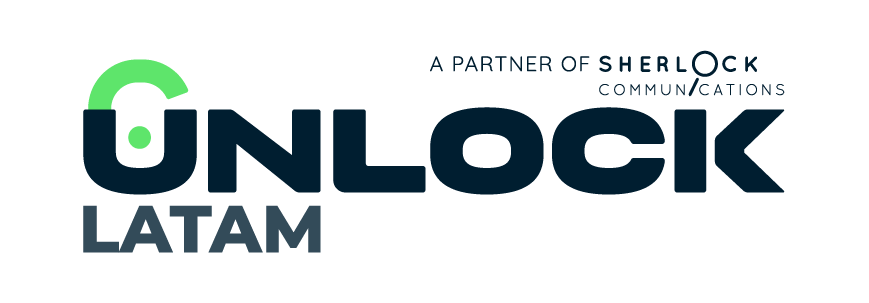What is outbound prospecting and how it differs from inbound marketing
The market is increasingly competitive and, both in marketing and B2B sales, we all need to optimize our strategies to attract more potential customers and increase our income. We want to take our business to another level and scale our turnover, and that is where some of the most effective tactics come into play to achieve those goals. Outbound prospecting is, precisely, one of the most used.
What is inbound and outbound prospecting
“Outbound prospecting” or “active prospecting” is a sales strategy that involves a sales team proactively communicating with potential customers or prospects who have not yet expressed interest in the company’s products or services.
Unlike “inbound marketing” or “passive prospecting”, where potential customers come to the company on their own initiative, in outbound prospecting it is the company that takes the initiative to identify and contact potential customers.
Through different techniques and instruments, outbound prospecting has the objective of identifying and qualifying potential customers interested in the company’s products or services and establishing initial contact with them.
It is a strategy that can be effective, but it must be done carefully and with talent, because it can also be intrusive if not done correctly. That is why it is essential that companies that use outbound prospecting focus on providing value to potential customers, respecting their communication preferences to build strong long-term relationships.
¿Outbound vs inbound marketing?
Implementing an outbound sales strategy is the fastest route to generating new revenue. Outbound prospecting is a way to go directly to your market and present your product and is the right tool for companies that want to generate quick profits and grow their customer base quickly.
Outbound has some advantages over inbound. The main benefit is that the output is fast. With high-quality data, outbound sales generate immediate results and allow you to create strategic messages. If you do it right, you will get qualified leads.
That’s why it’s not about thinking in terms of inbound or outbound. It is best for B2B lead generation to take advantage of both strategies. They are two separate approaches and each offers its own advantages.
The key is analyze which approach works best for your business objectives. That depends largely on your clients, your business model and your budget/investment capacity.
Overall, using a combination of inbound and outbound allows you to merge your entire marketing funnel and sales funnel into one efficient machine, which works to achieve your sales and lead generation goals.
Inbound marketing: inbound sales
As we said, inbound is a lead generation strategy in which your prospects come to you.
Potential customers are attracted by marketing campaigns, content you have published on your blog or other channels, etc. Because inbound is intended to attract people, it is essential to ensure that the content and the storytelling is valuable and engaging.
When we talk about inbound marketing for lead generation, we have to keep in mind that the objective is not to sell but to help clients define, investigate and solve a problem.
You need to ensure that you reach these customers in the initial decision-making phase so that you can positively influence their decision.
Outbound prospecting: some examples
One notable difference between outbound and inbound sales is the techniques a sales team uses to sell. Some of the most used tools in outbound prospecting are:
- cold call– Sales representatives call phone numbers they have obtained through contact lists or research to present the company’s products or services. It is an unsolicited telephone call to potential customers in an attempt to make a sale. Here, the script is key, since a poorly planned call can have the opposite effect: many people consider it invasive and can have the opposite effect.
- Outgoing email: Like cold calling, outbound email is email sent without prior permission, with the end goal of connecting and scheduling a meeting. It is considered less invasive than cold calling. If you use this method, automation software is a must. These emails often include a brief introduction to the company and its offerings.
- Social selling: Outbound prospecting also researches and interacts with potential clients on social networks. Where it is B2B, sellers can use platforms like LinkedIn to connect with people who may be potential customers and then send direct messages or connection requests.
- Paid advertising: Businesses can use online advertising, such as search ads, display ads, or social media ads, to attract people searching for similar products or services.
- Participation in events and trade fairs: Attending trade shows and industry events provides the opportunity to interact with potential clients in person and gather contact information.
Outbound prospecting in B2B
Outbound prospecting in the context of B2B refers to the strategies and tactics used to identify and connect with potential customers in the business environment.
The B2B approach is different from marketing and prospecting in the consumer (B2C) space due to the complexity of business relationships and often involves a longer, more consultative sales process.
Here are some outbound prospecting strategies specific to B2B:
- Market Segmentation: In B2B, it is essential to identify and segment the market based on criteria such as industry, company size, geographic location, and business needs. This helps direct prospecting efforts toward potential customers who are more likely to be interested in the company’s products or services.
- Development of buyer profiles: Creating detailed profiles of the ideal buyers (Buyer Personas) is essential. These profiles include information about the prospect’s position, responsibilities, challenges, and goals.
- Search and data acquisition: B2B companies often acquire specific contact lists from companies that meet their segmentation criteria. Additionally, they use online search tools and professional networks such as LinkedIn to find contacts of interest.
Mastering Outbound Sales: Strategies for Predictable Revenue Growth
Mastering Outbound Sales: Strategies for Predictable Revenue Growth Nobody said it better than Aaron Ross, author of Predictable Revenue: “You want growth that doesn’t require guessing, hope, and frantic last-minute...
The Role of Sales Development Representatives (SDRs) in Predictable Revenue
The Role of Sales Development Representatives (SDRs) in Predictable Revenue Sales Development Representatives (SDRs) play a crucial role in the implementation of the "Predictable Revenue" framework, initially conceptualized by Aaron...
B2B prospecting: finding high-quality leads
B2B prospecting: finding high-quality leads Although there are very common concepts among those of us who work in different areas of marketing, more than once we take for granted that...



